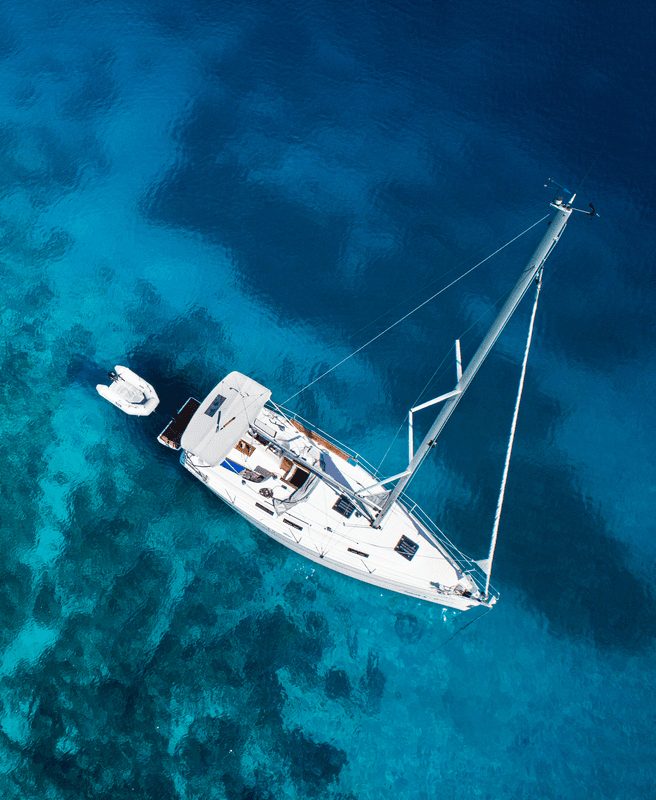The Best Places to Retire Abroad in 2025
June 2, 2025
Many retirees chase warm weather and choose a second residence where they can find the ideal climate.
However, there are many other vital considerations that go into deciding on the best place to retire.
If you’re thinking of retiring abroad, chances are you’re also looking for a retirement destination with the right culture, easy residency options and quality medical services. Ideally, somewhere that you can also get the most out of your pension income.
At Nomad Capitalist, we always advise our clients to ‘go where they’re treated best’, and this certainly applies to those seeking a new base for retirement.
So, which countries are best for retiring abroad?
Why Look for the Best Places to Retire Abroad?
Before we cover the best countries to retire in, why move away from your comfort zone and seek a life somewhere new?
Retiring abroad offers the chance to maximise your hard-earned savings while enjoying a new culture, better weather and often a higher quality of life.
Many countries provide far more affordable living costs, excellent healthcare systems and convenient retirement visa options. We believe that far too many people settle for retirement at ‘home’ without even realising what’s available beyond their shores.
By choosing the right retirement destination, you can stretch your pension a whole lot further, explore unique experiences and gain access to benefits like tax incentives or lower living expenses.
Whether it’s warm beaches, vibrant cities or a slower-paced lifestyle you seek, retiring abroad can turn your golden years into a more rewarding adventure.
The 20 Best Places to Retire Abroad
International living should be achievable and affordable for foreign retirees. We believe that retiring abroad should be a pleasure, a time to enjoy what you’ve worked hard to achieve.
Here are the 20 best countries for obtaining a retirement visa, based on the cost of living, healthcare system and other factors.
20. Thailand
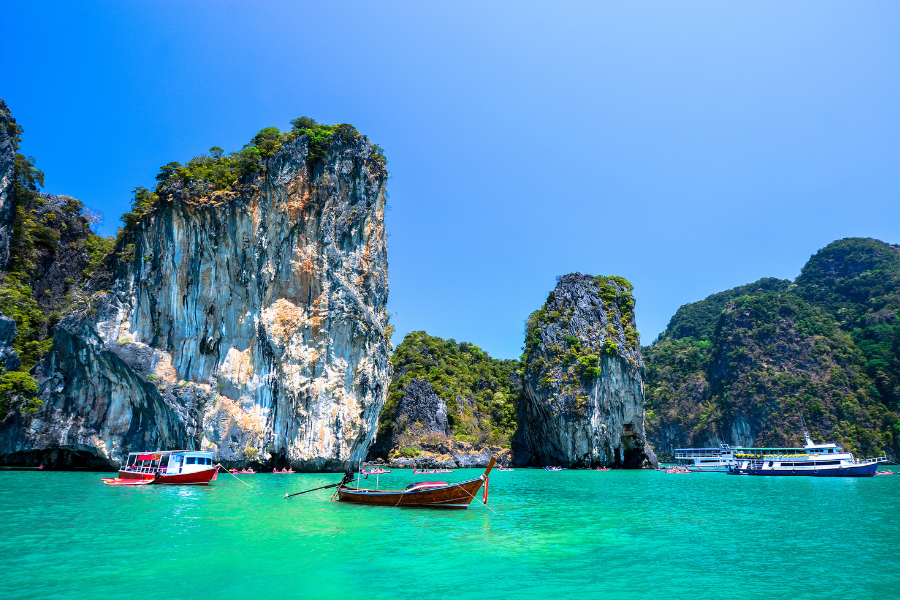
Thailand, located in Southeast Asia, is bordered by the Andaman Sea and the Gulf of Thailand. It’s situated southeast of Burma, and its 513,120 square miles make it three times the size of Florida. With over 71 million inhabitants, Thailand is the 20th most populous country in the world.
In September 2022, the Thai Board of Investment (BOI) unveiled the Long-Term Resident Visa for Wealthy Pensioners, offering them five years of Thai residence followed by an additional five years if they continue to meet the qualifying conditions.
You are eligible for this retirement visa if you are 50 and over and:
- You have a personal income of at least US$80,000 a year
- You have a personal income of no less than US$40,000 per year with US$250,000 investment in Thai government bonds, foreign direct investment or Thai property
- You have health insurance valid in Thailand with coverage of at least US$50,000 (that includes dependents) and at least ten months remaining on the policy. Alternatively, you can show proof of maintaining a balance of at least US$100,000 (US$25,000 for dependents) in a bank account for the past 12 months.
Thailand also offers a special Thai Retirement Visa.
Anyone 50 years of age or older can apply for this visa, and they may bring their spouse or dependent children with them. The visa offers two options: a one-year visa or a ten-year visa.
For the one-year visa, you’ll need to have at least 800,000 Thai Baht (approximately US$23,000) in a Thai Bank account and a monthly income or pension of at least 65,000 Thai Baht (approximately US$1,900).
The ten-year option requires a security deposit of at least 3 million Thai Baht (approximately US$88,000) in a bank account in Thailand, or you’ll need an annual income of at least 1.2 million Thai Baht (approximately US$35,000).
19. Greece
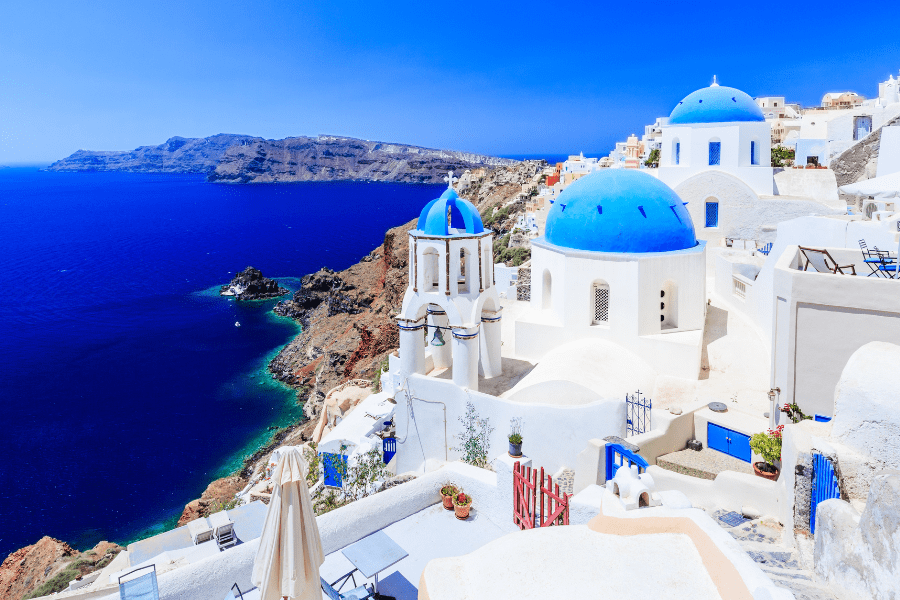
Greece is situated in Southern Europe, between Albania and Turkey. It’s a beautiful country, with a peninsula and an archipelago of approximately 2,000 islands that border the Aegean Sea, Ionian Sea and the Mediterranean Sea.
The Greek capital, Athens, is the oldest European capital city and was named after Athena, the Greek goddess of wisdom.
The Greek tax authorities offer a 7% flat income tax rate (applies only to non-Greek income) to foreign pensioners for up to 15 years to complement the Golden Visa program. You can qualify by:
- Not having been a Greek tax resident for five out of the last six years
- Switching your tax domicile from a country with which Greece has a valid double taxation agreement
- Proving that your pension is income earned from abroad via your foreign social security institution, another public authority, a professional fund or an insurance company.
Although Greece’s high season sees tourists flock to its beaches and islands in the summer, there are things to see and do all year round.
Greece also offers the Passive Income Visa, which is valid for two years and renewable once you prove a minimum monthly income of €2,000.
Whether you’re on the Golden Visa program, the Passive Income Visa or a flat-tax resident, you can enjoy things like skiing on some of Europe’s most southerly slopes.ly slopes.enian Riviera have witnessed a gastronomic revolution, culminating in the first Michelin Guide published about its culinary scene.
18. France

France is a key member of the European Union (EU) and a popular destination for tourists and retirees alike.
France offers a retirement visa to those who have entered the country and resided with a resident card, established or are establishing habitual residence in France or hold a retirement pension from a basic French social security scheme.
After five years of permanent residence, you can qualify for French citizenship, making it a good option for retirees looking for a stronger passport.
Generally, the country experiences cool winters and mild summers, but along the Mediterranean coast in southern France, it experiences mild winters and hotter summers. There’s also a frequent, strong, cold, dry, north-to-northwesterly wind known as the mistral.
France has a high-income, an advanced and diversified EU economy and a universal healthcare system.
While its economy is strong, it’s also known for the finer things in life, think champagne and foie gras.
However, if you want lower taxes and adequate asset management in a foreign country, there are better options.
17. Italy
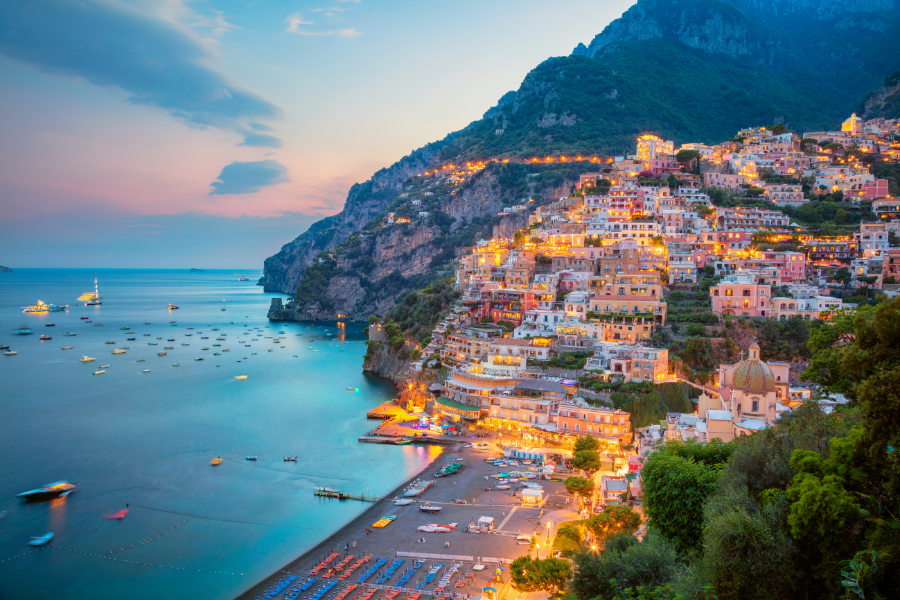
Located in Southern Europe, Italy is another popular choice for retirees looking to enjoy a taste of la dolce vita (the sweet life).
An Italian Elective Residency Visa (ERV) is the best option for foreign retirees. To obtain your ERV, you must submit an application at the Italian consulate in the country where you have legal residence. The required documents to include are:
- One or more passport photos
- Your valid passport
- A separate application form for each applicant
- Proof of passive income of just over €31,000 per person or €38,000 joint income per year for married couples, plus 5% per dependent minor
- Your valid marriage certificate if you’re a couple and a valid birth certificate for dependent minors
- Your property ownership deed for an Italian property or a rental lease agreement
- One-way travel ticket to Italy
- Proof of a private health insurance policy
- €116 per applicant for consular fees and €2,000 for the visa request fees.
Given its location and importance in the EU, living in Italy puts you at the heart of many things. The country has over 100 airports, with plenty of connections to major international destinations.
The Italian healthcare system is one of the best in the world, and the country has the seventh-longest life expectancy.
Another added bonus is that after ten years of retirement in Italy, you can apply for citizenship.
16. Antigua and Barbuda
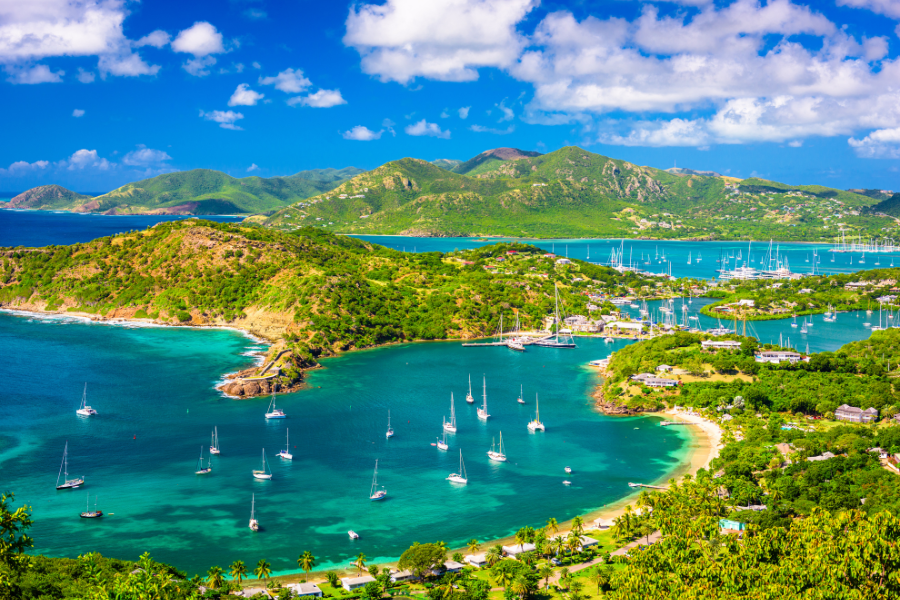
Antigua and Barbuda is a Caribbean nation and a member of both CARICOM and the Commonwealth.
While Antigua and Barbuda doesn’t offer a retirement visa per se, its citizenship by investment scheme is similar to Greece’s Golden Visa program. There are four investment options:
- National Development Fund
- Real Estate
- Business Investment
- University of the West Indies Fund.
What’s in it for you? Well, besides waking up to pristine beaches and turquoise waters, an Antigua and Barbuda passport grants you visa-free, visa on arrival or via an eTA travel to around 143 countries, including the UK and the Schengen Area. Plus, your full direct family, such as children, grandparents, parents and your spouse, who meet the conditions, are all eligible.
The best part by far is that you can live out your glory days with no capital gains tax, no estate taxes and no personal income taxes. Along with additional scheduled, charter and inter-island flights, you can fly directly to and from London, New York, Miami and Toronto.
15. Dominican Republic
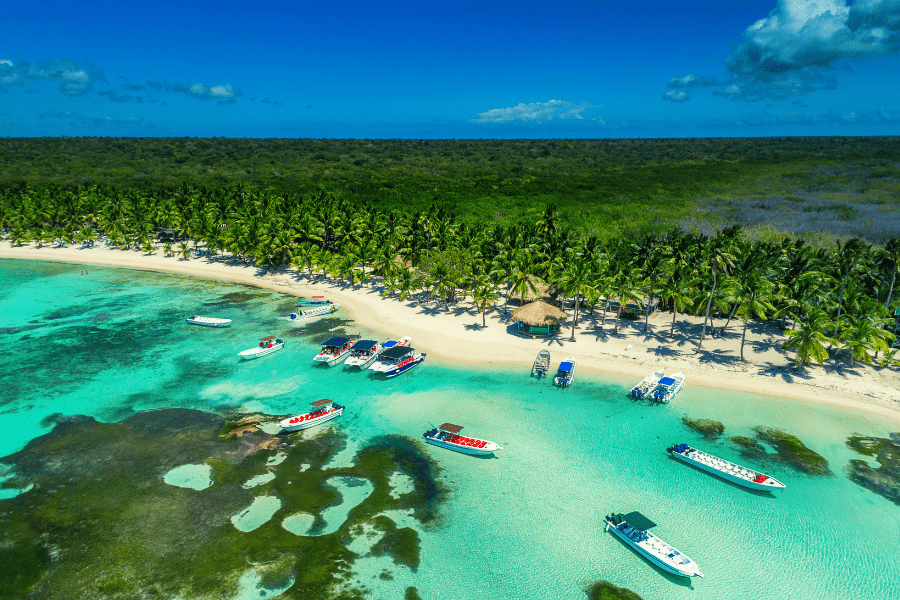
The Dominican Republic occupies the eastern two-thirds of the island of Hispaniola, between the Caribbean Sea and the North Atlantic Ocean. Its western neighbour, Haiti, owns the remaining third of Hispaniola.
Foreign retirees are eligible to apply for a temporary residence card issued by the Foreign Investment Division of the Dominican Republic, which is valid for one year.
In order to qualify, you must not have a criminal record and your monthly pension must be at least US$1,500 or its equivalent in Dominican pesos.
After residing in the Dominican Republic for five years on a temporary basis, you become eligible for permanent residency.
Following two years of permanent residency, as a rentista or pensioner, you can submit a citizenship application, which is granted by the Directorate of Passports.
Retirement in the Dominican Republic offers attractive benefits such as tax exemption on pension income, no taxes on importing certain goods from abroad and no wealth taxes.
14. Malaysia
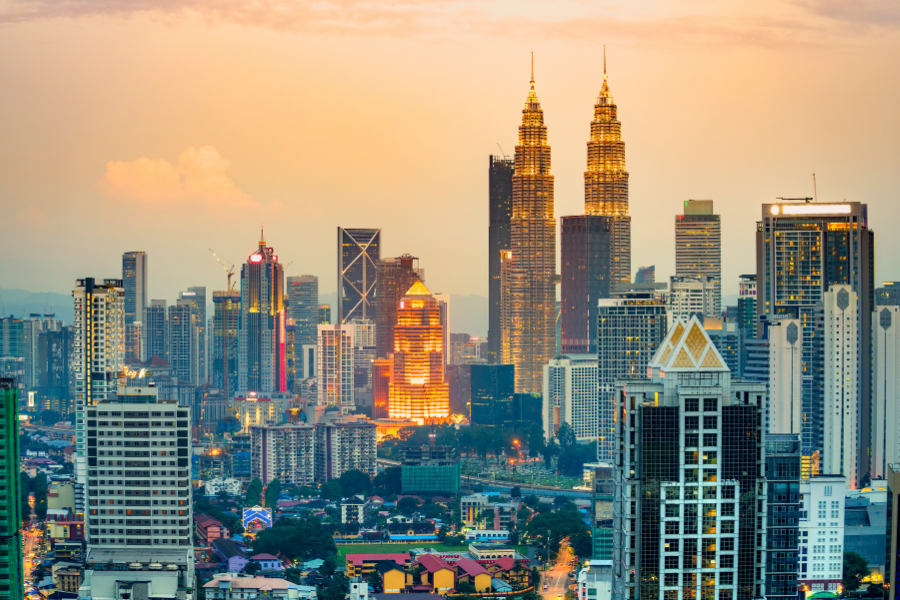
Malaysia presents a compelling proposition for retirees seeking a blend of exotic charm and modern convenience.
Located in Southeast Asia, this peninsula is as diverse as it gets. From the bustling metropolis of Kuala Lumpur to the tranquil beaches of Langkawi or the retirement hotspot of Penang, there truly is something for everyone.
To top it off, you’re never far away from other exciting destinations such as Vietnam, Thailand or Indonesia.
Retirees are welcomed through the Malaysia My Second Home (MM2H) program, a ten-year visa that permits you to live and retire in the country.
And if you earn income from abroad, you can benefit from its remittance-based territorial tax system, which means you only pay taxes on what you spend in the country.
13. Georgia
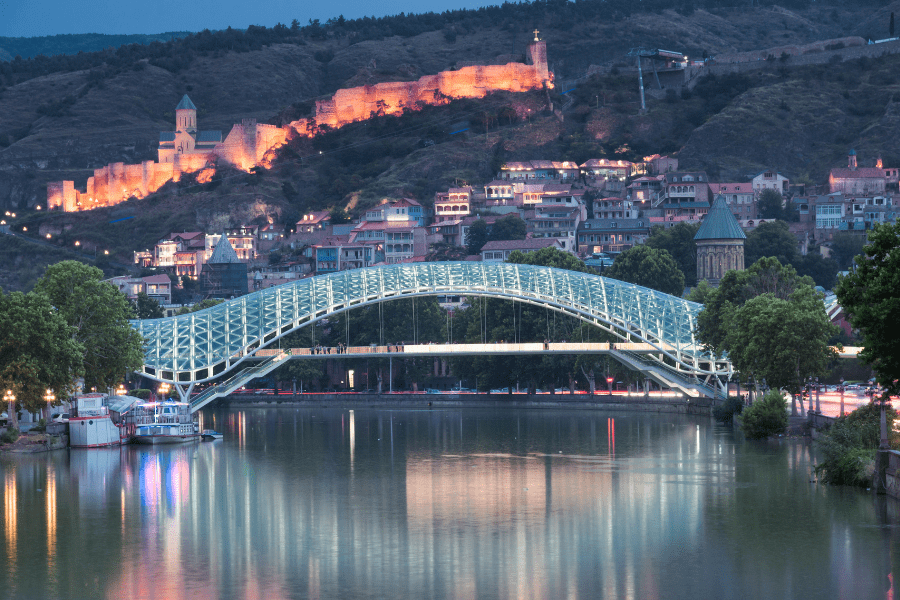
Georgia is an Eastern European country and a candidate for EU membership. It’s situated between Turkey and Russia and is bordered by the Black Sea. While Georgia does not offer a retirement visa, its D5 category of immigration visa is a long-term residence permit valid for a year.
This is issued to those who purchase Georgian real estate (other than agricultural land) with a market value exceeding US$100,000 equivalent in Georgian lari.
You can renew the D5 annually, and after six years, you qualify for permanent residence. After ten years, you’re eligible for citizenship with a caveat: you must prove sufficient knowledge of Georgian history, language and law.
Although it falls under the radar, its cuisine is delicious and its wine is divine.
There are many spots to choose from as retirement destinations, including the capital, Tbilisi, Batumi or Mtskheta.
12. Montenegro
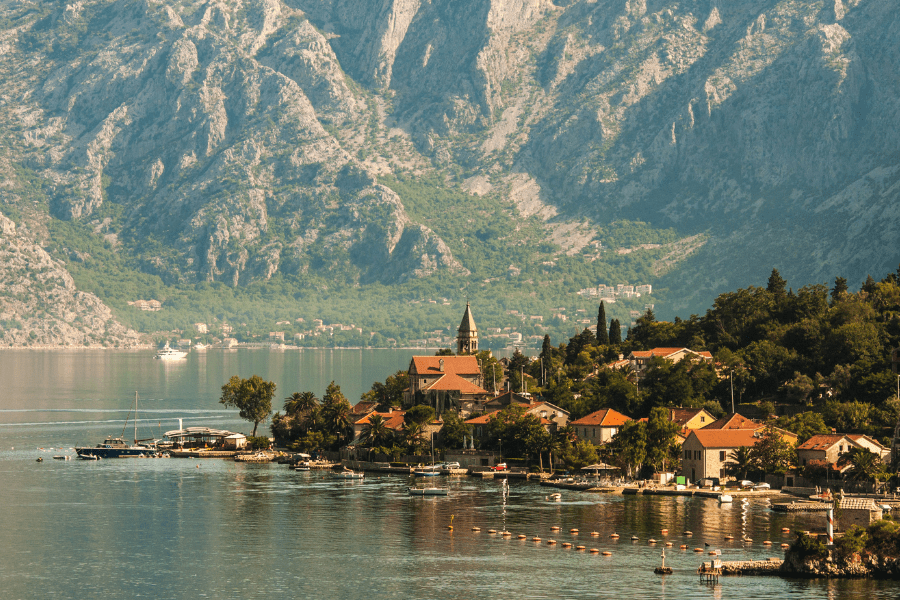
While Georgia offers a vibrant and culturally rich experience, those seeking a more laid-back and affordable retirement might consider Montenegro.
Montenegro is a Southeastern European country between the Adriatic Sea and Serbia, which might well be a place where retirees are treated best.
For retirees seeking a relaxed and affordable lifestyle, Montenegro presents a compelling option.
Although there’s no specific retirement visa, the temporary residence permit is readily accessible. To qualify, you’ll need to demonstrate sufficient pension income, secure accommodation and have health insurance coverage.
Permanent residence is attainable on the same grounds, but citizenship requires an application from a pensioner whose ‘admission to nationality would be of special interest for Montenegro’.
Montenegro is eminently livable. Mother Nature has been kind to the country, with lakes and mountains in the north, like Durmitor, deep canyons on the Rivers Tara and Morača and the picture-book Adriatic Coast.
To sweeten the deal even more, the cost of living is significantly lower than most other places in Europe.
11. Portugal
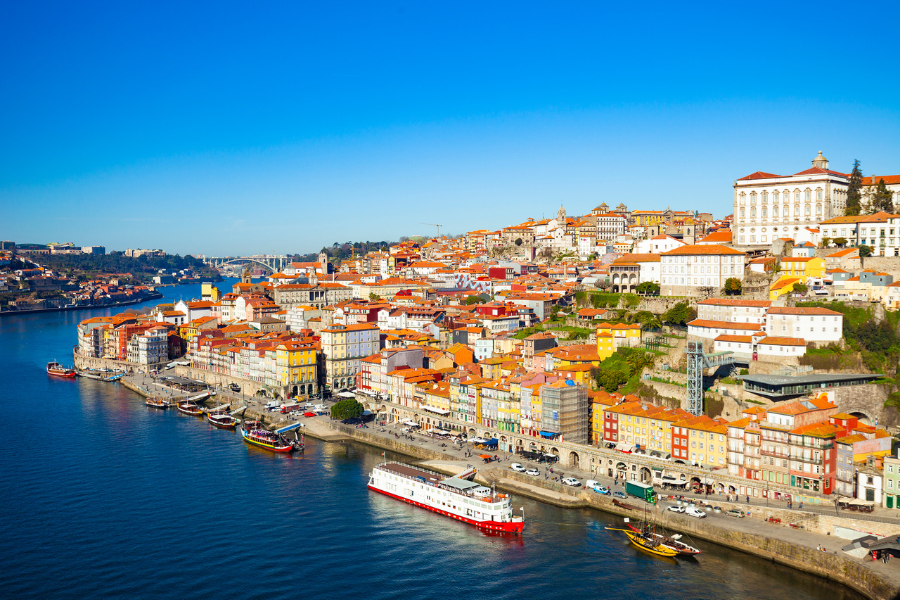
For those seeking a retirement destination with a more established expat community and a wider range of amenities, Portugal might be the perfect fit.
Portugal, with its majestic Atlantic coastline, culture-packed cities and delicious food, has long been a favourite among expats and retirees. From the bustling streets of Lisbon to the tranquil beaches of the Algarve, it’s not hard to see why many choose to live here.
Retirees can also easily obtain a D7 Visa for permanent residency in Portugal by submitting proof of passive income of at least €9,840 per year for a single applicant, €4,920 for a spouse, and €2,952 per child. This income can come from property, IP rights, or investments, but cannot be sourced from remote work with a company outside of Portugal.
Applicants must also hold an account in a Portuguese bank. After residing in the country for five years, it’s also possible to seek Portuguese citizenship.
The healthcare system offers quality medical services, but long waiting times mean you should factor in out-of-pocket costs for private hospitals or take out private insurance.
10. Spain
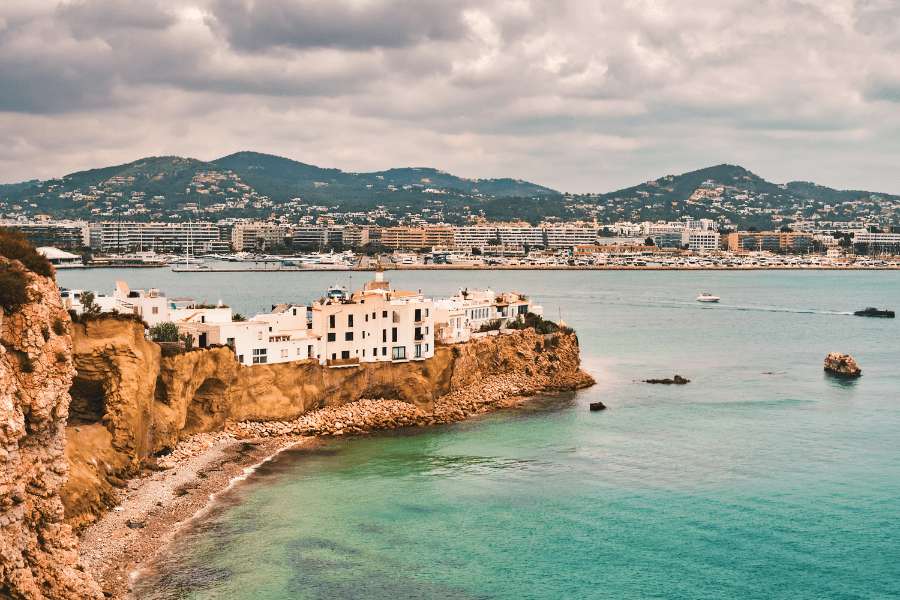
A popular destination for North Americans living abroad, Spain’s version of a retirement visa is known as the Non-Lucrative Visa (Passive Income Visa), intended for high-income individuals who do not intend to work.
To apply for this one-year renewable visa, you must submit originals and copies of the documents proving that you have sufficient financial means to cover the expenses of residing in Spain for the initial year of the residence permit.
This amount must be equivalent to a minimum monthly income of €3,000 per applicant (an additional €579 per month per family member), and the entire amount must be available at the time of application.
Notably, US retirees cannot have/leave loans or mortgages in the US when applying for residency in Spain.
Many retirees appreciate what Spain has to offer, including fine dining and entertainment at an affordable cost. Both the Spanish mainland and islands are home to some of the most stunning beaches in the world.
9. Ecuador
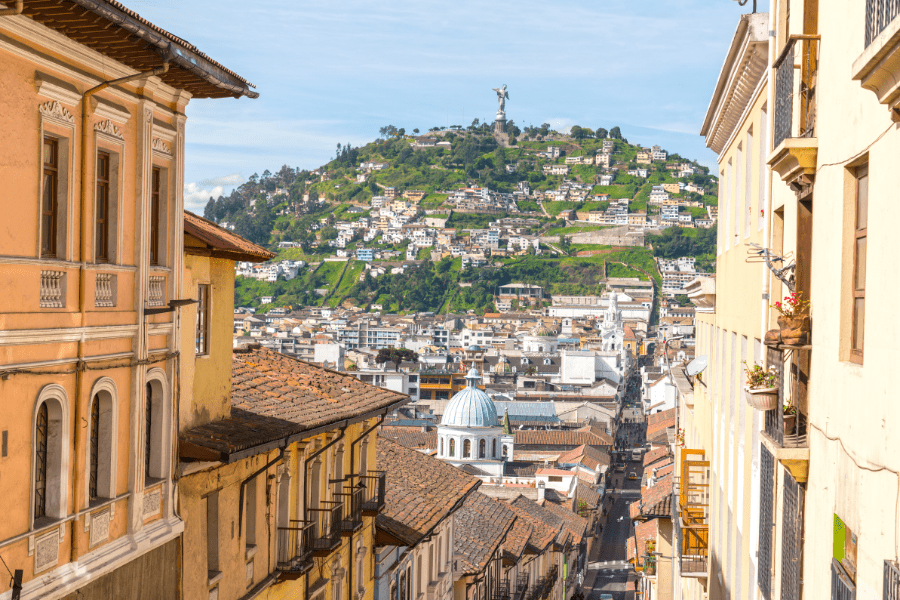
Ecuador is a South American country bordering the Pacific Ocean at the Equator, sandwiched between Colombia and Peru. It’s the 75th largest country in the world. Ecuador’s total area of 283,561 square km, which includes the Galapagos Islands, means it’s around the size of Nevada.
The Visa de Residencia Temporal Jubilado (retired temporary residence visa) is Ecuador’s retirement visa. It’s a temporary residence authorisation that the Ecuadorian State grants to retired foreigners who wish to settle in the country and whose monthly pension income emanates from public or private institutions located abroad.
The minimum pension requirement is at least US$1,410 per month (equivalent to three unified basic salaries). The visa application charge is US$50, and the visa processing fee is US$400.
This small country on the Pacific Coast has beautiful cities like Cuenca, a UNESCO World Heritage Site, and national parks galore.
If you are striving for adventure in your retirement, consider exploring Ecuador. It is one of the most ecologically diverse places in the world. Depending on your choice of location, you could even live close to the Amazon rainforest.
Ecuador also enjoys a low cost of living. As a retiree, you can enjoy access to Ecuador’s quality universal healthcare system at a fraction of the price available in the United States or Europe.
8. United Arab Emirates

The United Arab Emirates (UAE), bordered by the Gulf of Oman and the Persian Gulf, has a unique proposition for wealthy retirees.
If you’re over the age of 55, you’re eligible to relocate as a retiree under a long-term renewable residency visa.
To qualify, you must own a property of no less value than AED 1 million (around US$270,000), have savings of no less than AED 1 million or have a monthly income of AED 20,000 (about US$5,400).
If you live in Dubai, then that figure is reduced to AED 15,000.
The northeast part of the Musandam Peninsula is the most popular place to retire. Here, the three largest emirates – Abu Dhabi, Dubai and Sharjah – accommodate nearly 85% of the population.
7. Ireland

For those interested in making Ireland their new home, we urge you to first explore your family tree to see if you’re eligible for citizenship by descent.
Otherwise, if you wish to retire to Ireland, you must be able to prove that you’re financially independent. To do so, an individual income of €50,000 per year will suffice.
You must also be able to access a lump sum of money, equivalent to the price of an Irish residential dwelling, that covers any sudden major expenses.
While Ireland might not tick the usual retirement boxes due to its lack of warm weather, it offers something quite unique: European culture at its best.
Furthermore, Ireland is one of the most beautiful European countries, with rugged nature to be explored and iconic pubs to soak up the atmosphere.
North American expats have a long-term affinity for Ireland. For some, living on the Emerald Isle is a chance for them to reconnect with their roots. Many Irish people, after all, left their motherland to make a new life in the US.
6. Cyprus
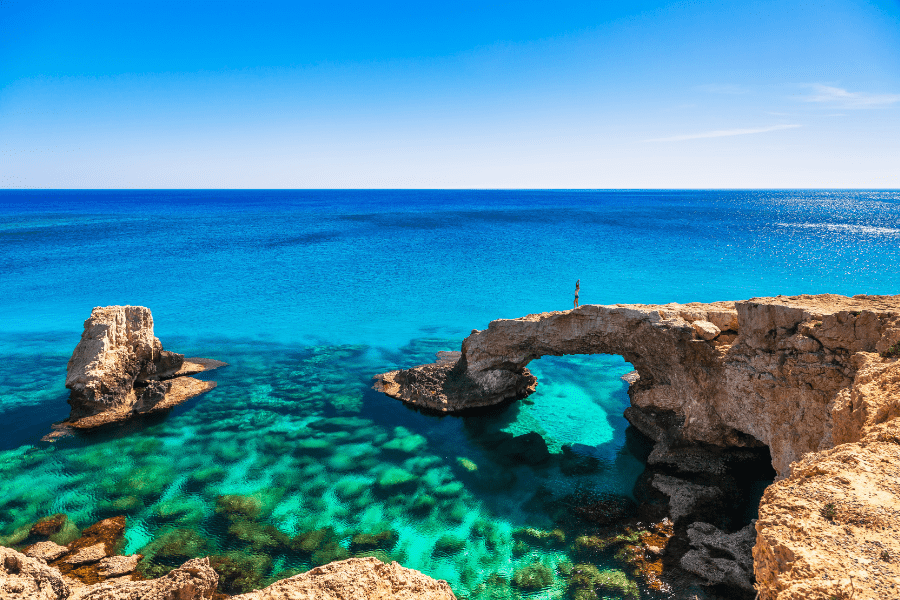
Cyprus is a small island located in the eastern Mediterranean.
This EU member country is a popular jurisdiction for offshore company formation due to its low tax rate. It’s equally popular with retirees for its warm weather and slow pace of life.
You’re eligible for an immigration permit in Cyprus if you belong to one of the six categories cited in Regulation 5 of the Aliens and Immigration Regulations.
Category F, which is valid for 10 years and renewable, has become known as the retirement visa because most of its applicants derive their monthly income from their pensions.
You qualify for a Category F immigration permit if you have a minimum income of €9,568 as a single applicant and at least €4,613 for every dependent. There is also an application fee of €500.
This income must come from abroad (pensions, rental income, dividends, etc.), and applicants are not permitted to work in Cyprus.
Additional requirements include owning or renting a property in Cyprus, having a clean criminal record, biometric registration and private health insurance.
5. Costa Rica
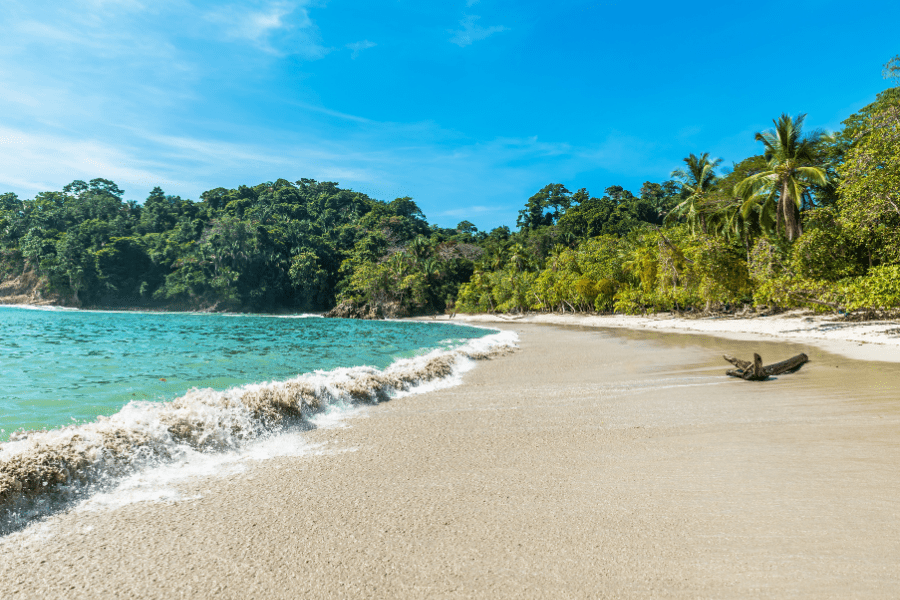
Costa Rica, located between Nicaragua and Panama in Central America, shares borders with both the Caribbean Sea and the North Pacific Ocean. This country spans 51,100 square kilometres and also includes the renowned Isla de Coco.
To qualify for the Pensionado (retirement) Visa in Costa Rica, you must receive a monthly income of no less than US$1,000. When you apply, you must also demonstrate proof of a clean criminal record.
Another draw for retirees is Costa Rica’s healthcare system, the national medical program, which is the finest in all of Latin America.
You can also keep in shape by trekking the country’s great outdoors, with roughly a quarter of Costa Rica comprising national parks and wildlife sanctuaries.
4. Malta
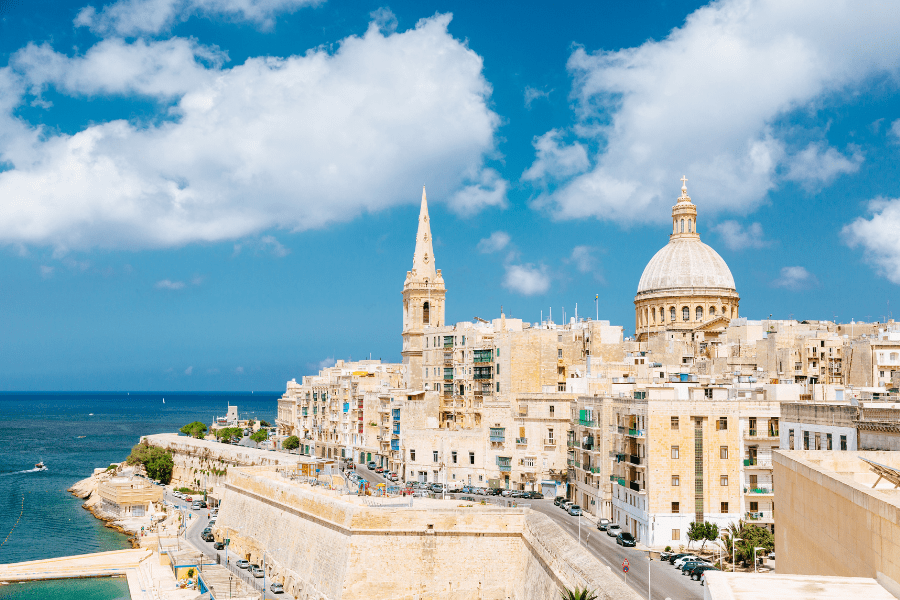
An archipelago of islands in the Southern Mediterranean Sea, Malta lies 80km (50 miles) south of Sicily.
Malta has become a popular country for foreign retirees due to the availability of programs such as the Malta Global Residence Program and Permanent Residence Program (MPR) for both EU and non-EU residents.
The main criteria for both are purchasing or renting a property and proving you have sufficient means to support yourself and your family.
Malta is a forward-looking country, and its economic success ensures a modern, cosmopolitan lifestyle for expat retirees.
Maltese residents also enjoy high-quality medical care in public and private hospitals, which is recognised by the World Health Organization.
3. Colombia

Situated in the northern part of South America, Colombia shares borders with the Caribbean Sea, Venezuela, the North Pacific Ocean, Ecuador and Panama.
In terms of visas, Colombia has the M Pensionado Visa, which you can apply for in person or online through the Ministry of Foreign Affairs.
Provided you have a clean criminal record and can prove that your monthly pension income meets the minimum requirement of around US$1,100 (equivalent to three minimum salaries) and pay the processing fee, you’ll receive your visa within ten days.
The World Health Organization ranks Colombia’s healthcare system above Canada and the US.
The wins for Colombia don’t stop there. When you compare the cost of living to the US, Colombia is typically around 60% lower.
2. Panama
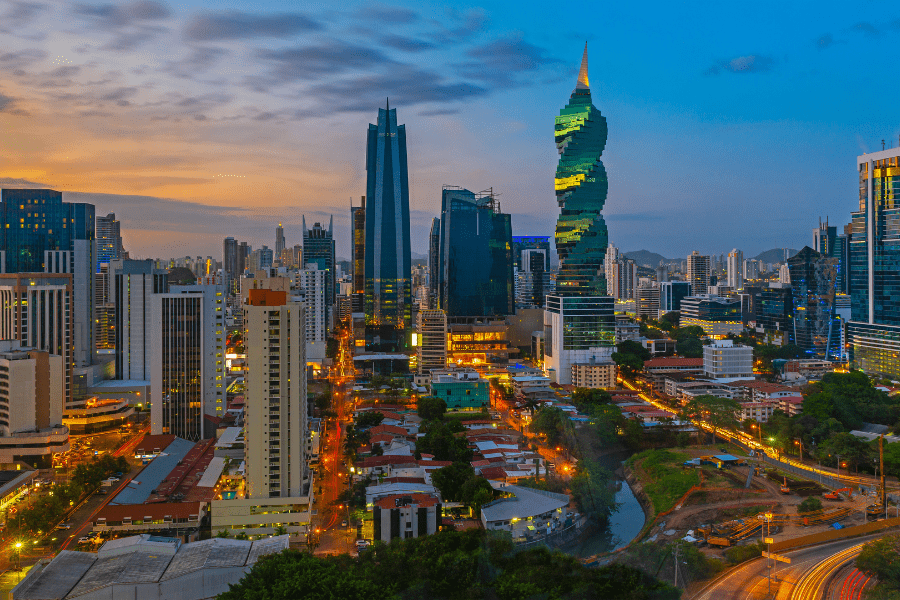
A Central American country, Panama borders both the Caribbean Sea and the North Pacific Ocean and is situated between Colombia and Costa Rica.
Panama has long been a favourite of US expats and retirees due to its close proximity to home, use of US currency, state-of-the-art public services and welcoming visa options.
While you will need to use a local immigration lawyer to file an application for a retirement visa in Panama, the process is very easy and well worth the added step.
To qualify, you must show a monthly income of US$1,000 and an additional US$250 for each dependent.
Another option is to travel to Panama on a tourist visa and change your status later in Panama.
Panama is a reassuringly safe country. Locals are friendly, especially in the countryside. There is a lust for life in Panama that you will immediately detect in your first encounters with the cheerful locals.
The weather in Panama is warm all year round. It’s never too cold or too hot. You’ll likely never see snow in Panama, nor will you see the thermometer go much higher than 90°F/32°C.
Panama offers incredible scenery with miles of white sandy beaches and rugged mountains. Inhale the cool air of the two principal ranges, the Tabasará Mountains (Cordillera Central) in the west and the Cordillera de San Blas in the east.
Well-established expat communities are dotted across Panama, centred around Boquete, Coronado and Panama City.
Panama has some of the top medical facilities in all of Latin America. Compared to North America, its healthcare prices are significantly lower, and the standard of care is higher. The doctors and medical facilities in Panama City are first-rate.
1. Mexico
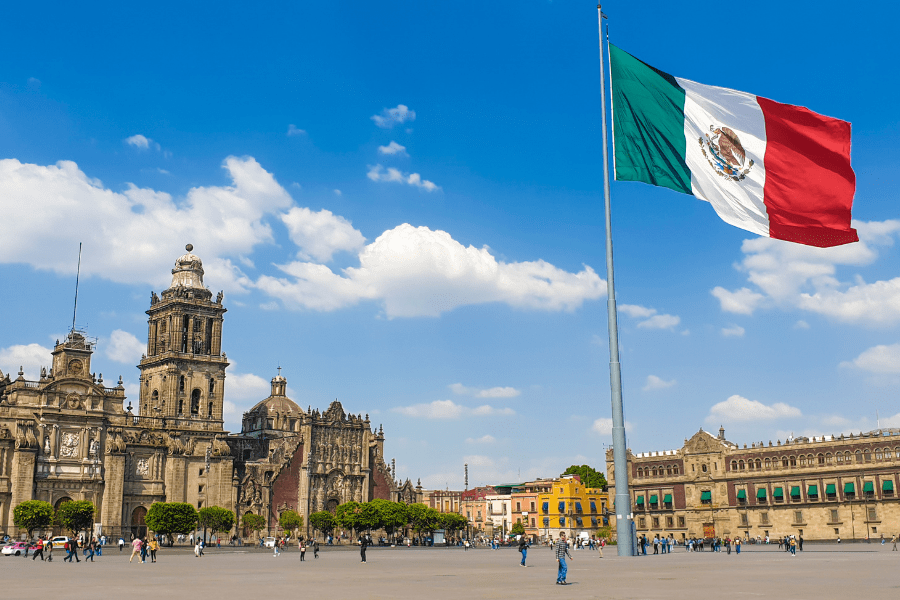
What’s truly unique about Mexico is that they make it extremely easy for retirees to become a permanent resident.
What you’ll need is an original letter from the institution from which you’re receiving your pension, which shows that you have an income of US$7,500 (equivalent to at least 500 days of Mexican minimum wage) for the past six months, and to pay the non-refundable US$51 visa application fee – not a bad deal, when you consider what you get for the low barrier to entry.
When applying for citizenship, you must pass a Mexican History and Culture exam, plus a Spanish language exam. However, applicants over 60 must only pass the Spanish language portion and demonstrate basic Spanish skills at an interview with the Ministry of Foreign Affairs.
When it comes to choosing a country to retire in, Mexico is a popular option for US retirees due to access to Mexico’s public-funded healthcare system, among other reasons.
If your goal is Mexican citizenship, you must have been legally resident in Mexico for at least five consecutive years.
This will remove the obligation to keep the Secretaría de Gobernación updated with your personal circumstances (like address changes) and, therefore, reduce the bureaucratic burden of residency.
Generally, when applying for citizenship, you must prove that you can speak Spanish, have a knowledge of the history of the country and integrate into the national culture. There is also a written test, though retirees are not required to take it.
However, you will need to sit for an interview with an officer of the Ministry of Foreign Affairs and speak Spanish at some point during the interview.
Inland, the weather is warm and mild, although it can become cooler from December through March. However, the Yucatan is hot all year round, making it a great place for warm-weather lovers to settle in long-term.
Best Places to Retire Abroad: FAQs
There is no ‘best’ place as it depends entirely on your personal preferences, but Mexico, Portugal and Panama are consistently ranked high on the list due to affordability, climate and welcoming expat communities.
Portugal often ranks high as one of the cheapest places to retire, offering affordable living costs, a robust healthcare system and a high quality of life. Other countries with retirement visas that are frequently noted for their low cost of living and safety include Spain, Costa Rica, Mexico and Malaysia.
American retirees often flock to countries like Mexico, Costa Rica, Portugal, Spain and Panama, thanks to welcoming climates, lower cost of living and friendly communities. By far, one of the best countries for US expats is Mexico. It offers proximity to the US, affordable living costs and established expatriate communities, making it one of the most popular options for retirees.
Panama is widely recognised as one of the best countries for US expats, and it is noted for its accessible retirement visa process through its Pensionado Visa program.
US$2,500 a month is a viable budget for retirement in several countries that offer a low cost of living and a high quality of life. Some of the cheapest countries to retire with this budget include Mexico, Portugal, Costa Rica, Ecuador and Thailand, which are known for their affordable living costs and expat-friendly environments.
Countries like Costa Rica, Panama, Mexico and Thailand all offer year-round sunshine and comfortable lifestyles. These are all top choices for retirement.
Affordable retirement destinations include Mexico, Ecuador, Colombia and Thailand. In these countries, the cost of living is low and healthcare is of high quality.
Mexico is ideal for US retirees because of its proximity, affordable cost of living, easy residency process and established expat communities.
Retire Where You’re Treated Best
What you look for when considering places to retire is quite different from how you choose where to go on vacation. You likely wouldn’t want to live in a resort.
Are you a high-net-worth individual seeking the most tax-efficient place to retire? Become a client of Nomad Capitalist, and we’ll help you find the optimal location to enjoy your retirement years.
Choosing which country to retire in is a decision that looks different for each person. We can help you find the best retirement destination for your needs, so let us take you where you are treated best.
We help seven- and eight-figure entrepreneurs and investors create a bespoke strategy using our uniquely successful methods. That will allow you to keep more of your own money, create new wealth faster and be protected from whatever happens in just three steps.
At Nomad Capitalist, we have a network of lawyers, estate agents, accountants and tax and company formation specialists based around the world.
All that expertise and real-world experience come together when we advise you on how to build your holistic, bespoke action plan. Discover how we do things here.



How to Get UAE Citizenship – The Complete Guide
Sovereignty – both national and personal – shapes ambition, secures wealth, and defines status in a shifting global order. For the high-achieving global citizen, acquiring a second or even third passport is more than a lifestyle upgrade; it’s a strategic move in long-term financial and geopolitical positioning. But not all citizenships are created equal – […]
Read more

A Gateway to Central Asia: New Kazakhstan Golden Visa Program for 2025
Central Asia just raised the stakes in the golden visa game. In May 2025, Kazakhstan officially launched a 10-year Golden Visa program in an ambitious move to position the country as a serious contender in the global investor migration space. At a time when other international regions are rolling back their citizenship and residency options, […]
Read more

Top Countries Offering Golden Visas in 2025
Residency is no longer about lifestyle – it’s about leverage In an increasingly unpredictable world, Golden Visas offer something most governments can’t: certainty in exchange for capital. They are more than migration tools; they are strategic safeguards offering residence rights, future citizenship, global mobility, and access to tax-friendly jurisdictions. For investors, entrepreneurs and globally minded […]
Read more





